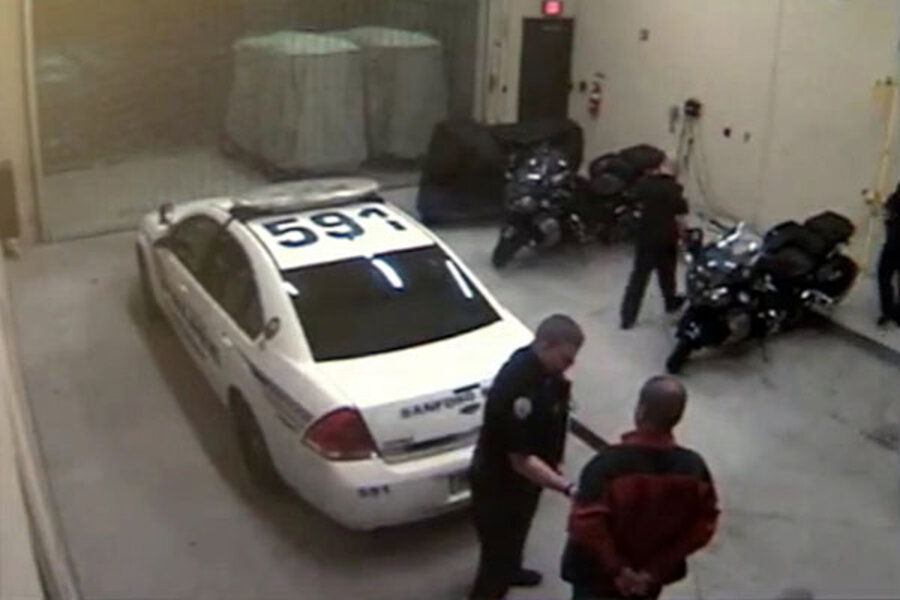George Zimmerman head wound gives little clarity to Trayvon Martin case
Loading...
Evidence keeps trickling in regarding the shooting death of Florida teenager Trayvon Martin on Feb. 26, but so far it has left legal experts and the public with conflicting and murky details.
The latest tidbit – an enhanced image from a police video, which seems to show an injury on the head of George Zimmerman – adds another piece to a puzzle that's still unresolved.
Mr. Zimmerman is the neighborhood-watch captain who identified the 17-year-old Trayvon as suspicious-looking in a call to police, then ended up in a confrontation with the youth that concluded with Zimmerman pulling his gun and shooting Trayvon.
Trayvon's death has stirred a national outcry, with many Americans outraged at the appearance that investigators quickly adopted Zimmerman's side of the story – that he acted in self-defense after Trayvon turned on him.
The footage is a surveillance video from the Sanford, Fla., Police Department, which gives a top-down look at Zimmerman's head as he was escorted into the police headquarters. Initially, the video seemed to provide fodder for skeptics of Zimmerman's story, who argued that he seemed uninjured.
Through an enhancement process that sharpens the images, a newer version of the video shown by ABC News Monday shows discoloration on the top of Zimmerman's head, visible through his thinning and close-cropped hair. According to news accounts of the story he told police that night, Zimmerman said that Martin was on top of him and banged his head downward, before Zimmerman used his gun.
But legal experts say this newest drop of evidence falls far short of being proof that Zimmerman's whole story is correct.
There are still conflicting views from Zimmerman and from others about central questions, such as who confronted whom, how the contact escalated into physical struggle, and whether the struggle was severe enough that Zimmerman would have a legitimate fear for his life.
A wound on the head could be consistent with Zimmerman's story of being attacked after losing sight of Martin and heading on foot back toward his vehicle. But if Zimmerman instigated the confrontation, an injury would also be consistent with Trayvon struggling to defend himself, says Gary Kleck, a criminologist and gun-crime expert at Florida State University in Tallahassee.
The enhanced video footage is just one more piece of evidence in what for now is an inconclusive case. Federal investigators and Florida prosecutors alike are investigating.
Ambiguity is inherent in many cases such as this one, in which one key participant is dead and the other has every reason to provide a story sympathetic to himself, Professor Kleck says.
"If anything, what's unsual about this situation is we do have a little fragmentary third-party evidence," he says. That includes statements from a few witnesses, and 911 calls during the altercation.
Zimmerman also was on the phone with police, reporting about Trayvon, before he left his car to follow Trayvon on foot, against the urging of the police responder on the phone with him.
A bit of evidence that could tip against Zimmerman is the story told by a girlfriend with whom Trayvon was speaking by phone when he noticed Zimmerman following him. The black teenager was an outsider, but not an unwelcome one, in the mixed-race community. He had come there with his dad and was walking alone from a convenience store that night toward the house of his father's girlfriend.
The Martin family's attorney, Benjamin Crump, says the girlfriend has reported hearing Trayvon say, "Oh, he's right behind me again," and "Why are you following me?"
"Assuming that's accurate then it most assuredly suggests [Zimmerman] was initiating the contact," Kleck says.
But if a case goes to trial, a jury would have to weigh which testimony is reliable and which isn't.





